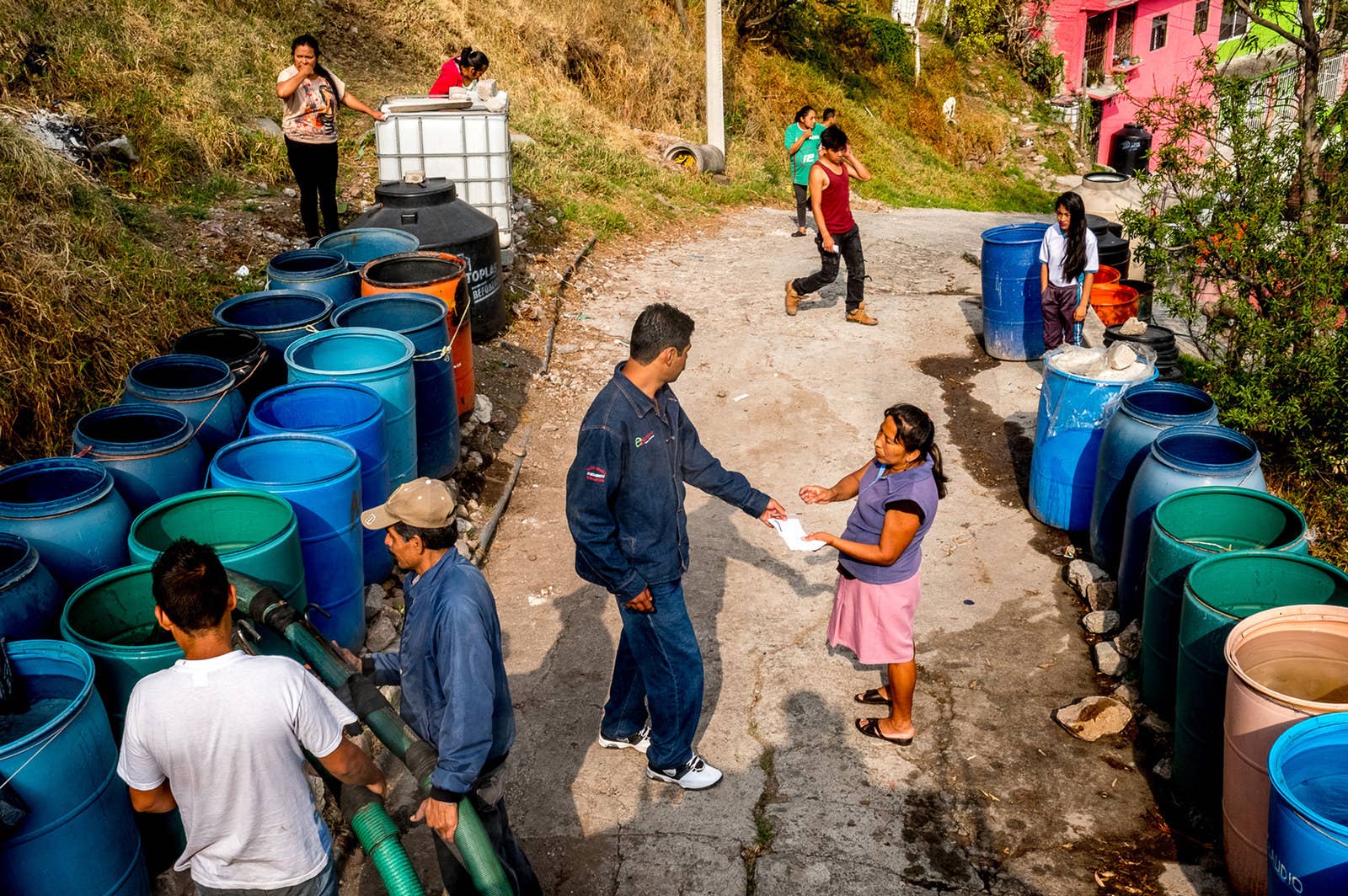Mexico City
Water Crisis
Peri Urban
Informal Settelments
Team ········· Yotam Ben Hur
Type ········· Travel Fellowship
Year ······ 2020
Status ······· Ongoing For KPF Foundation Paul Katz Fellowship
Type ········· Travel Fellowship
Year ······ 2020
Status ······· Ongoing For KPF Foundation Paul Katz Fellowship

Redefining the relationship between Nature and Architecture in Peri-Urban Mexico City
21st
century Mexico City is on the verge of an acute water crisis. The climate crisis comes partly from the fact that so much of the countryside’s porous land — including large stretches of what Mexico City has supposedly set aside for agriculture and preservation for its aquifer, called “conservation land” — has been developed. So it is buried beneath concrete and asphalt, stopping rain from filtering down to the aquifers, causing floods and creating “heat islands” that raise temperatures further and only increase the demand for water. The rapid urbanization of the natural and non urban conservation land is “linked to poor neighborhoods and informal settlements that develop in these areas, a process that occurs even in the periphery of the Federal District, which has a growth of 1.8%, doubling that of the whole entity”. (Aguilar, 2008:136). Since the second half of the twentieth century, informal settlements multiplied in Mexico City’s urban space. From then on, Mexico City’s land-use policies have failed to effectively solve the problem of informal human settlements occupied by the poorest inhabitants, causing greater water pollution, greater scarcity, unsustainable mode of water management and unbearable conditions of living. Thus, the peripheral and diffuse expansion of informal settlements that we can observe in the country’s largest metropolis is attributable, to a large extent, to the lack of access of a major share of the low-income population to affordable housing or lots.

Mexico City
has entered a stage in which, on the one hand, there is a great need for public works, housing, and service infrastructure for the peri-urban poor. And, on the other, huge pressures are being placed to conserve the surrounding environment on the verge of a climate crisis. In this constant battle between architecture and nature, between the need to urbanize land and the desire to conserve and restore the landscape, architects and planners must intervene and redefine the relationships between the two entities, to end the loss and offer a solution of coexistence. An approach the does not separate the two realities, but rather sees the informal settlements and the natural protected areas as components of the same ecosystem.I
believe this balance of co-living between nature and the built environment existed before in Mexico City in the lacustrine landscape of Xochimilco. Located 28 km south of the city, the Xochimilco constitutes the only reminder of traditional Pre-Hispanic land-use in the lagoons of the Mexico City basin. In the midst of a network of small canals, on the edge of the residual lake of Xochimilco, Chinampas ‘floating’ gardens can still be found and are considered an 'ecological reserve'. Xochimilco forms part of an UNESCO cultural World Heritage site but on a national level it is also a protected natural area. This model of living represents a symbiotic relationship between nature and urbanity, between agriculture production and housing and between water and land. By carefully studying the physical, technological, social, economical, political, environmental and spatial attributes of the Xochimilco landscapes, we can learn how to develop other peri-urban areas of Mexico-City. And define a new city edge that offers an alternative paradigm of Nature and Architecture.
The
research aims to develop a framework for the future design of a new peri-urban housing typology. First part ofthe research will focus on the exemplary Xochimilco Borough and will examine the historical development of the landscape and settlements surrounding it- the geographical, economical, social and environmental aspects, while focusing on the Chinampas agricultural system and its relationship to the informal housing units around it. The second part of the research will examine other conditions of informal settlements both in the Xochimilco Borough and the adjacent Tlalpan Borough (following road Carr. Picacho-Ajusco), examining other typologies of informal settlements in relation to nature preservations and potential sites of intervention and implementation.